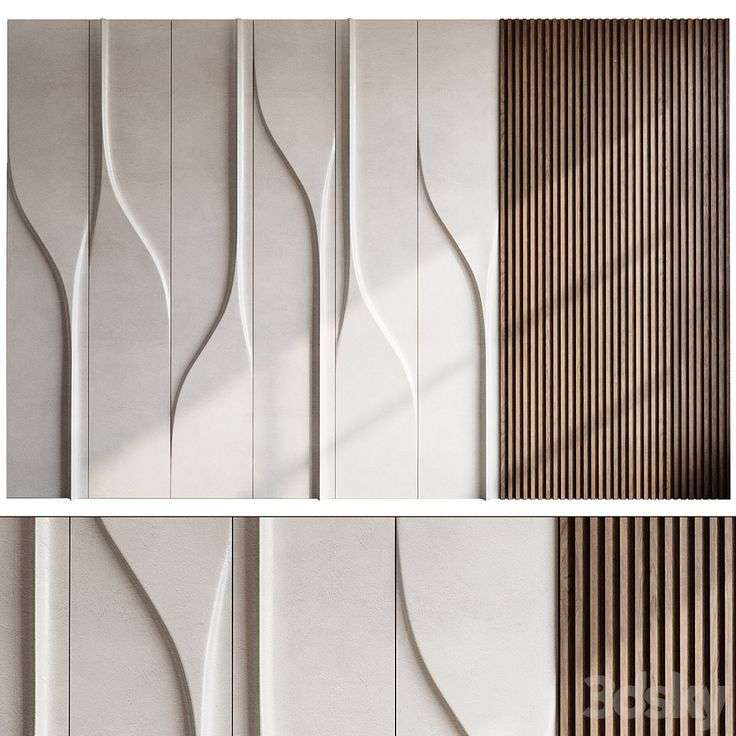When we think about interior design, we often focus on aesthetics—colors, textures, and furniture—but one of the most powerful elements often goes unnoticed: sound. Soundscapes can have a profound impact on how we experience a space, influencing mood, energy, and even productivity. Whether you’re designing a calming retreat or a vibrant social space, integrating sound into your home design can elevate the atmosphere in ways that visuals alone cannot.

1. Understand the Role of Sound in Interior Design
Sound can greatly affect the ambiance of a room. While visual elements like colors and furniture help shape the look of a space, sound influences how we feel in that space. Certain sounds can evoke specific emotions, whether you’re looking to create relaxation, focus, or excitement.
- Relaxing Soundscapes: Nature sounds like flowing water, birdsong, or gentle rain can create a serene environment, ideal for spaces like bedrooms or living rooms.
- Energizing Soundscapes: Upbeat music or dynamic sounds can be used in spaces designed for socializing or exercise, such as kitchens, dining areas, or home gyms.
- Focus and Productivity: For home offices or study areas, ambient sounds or white noise can help reduce distractions and improve concentration.
By thoughtfully integrating sound, you can enhance the overall mood of a space and make it more inviting, functional, and immersive.
2. Choose the Right Sound for Each Room
Each room in your home serves a different purpose, and the soundscape should match the desired atmosphere of that space. Here’s how to match sounds with function:
- Living Room: The living room is often the heart of the home, where you relax, entertain, and spend time with family. Soundscapes like soft instrumental music, nature sounds, or even a crackling fireplace can create a warm and welcoming atmosphere. Consider using a sound system or speakers that blend seamlessly into your décor.
- Bedroom: Bedrooms should feel like a peaceful sanctuary. Calming soundscapes, such as ocean waves, birds chirping, or gentle wind, can promote relaxation and improve sleep quality. White noise machines or sound apps on your phone can also be helpful for drowning out unwanted background noise.
- Home Office: For a productive workspace, ambient sounds or even binaural beats can help increase focus and reduce distractions. Music with no lyrics or nature sounds like rain or wind are also great options for enhancing concentration without overwhelming the senses.
- Kitchen and Dining Areas: These spaces are where energy and creativity come to life. Consider adding playful or upbeat soundscapes, like jazzy tunes or the sound of crackling food. In dining areas, soft background music can create an inviting ambiance during meals.
Tailoring soundscapes to each room’s purpose ensures that the auditory experience complements the visual design and functionality.
3. Incorporate Natural Elements for a Holistic Feel
Incorporating natural sound elements into your design can make the space feel more connected to nature. This approach not only enhances the ambiance but can also improve mental well-being.
- Water Features: A small indoor water fountain or a decorative fish tank can create the soothing sound of flowing water, which is calming and grounding. Water features are particularly great for creating relaxation zones in living rooms or bedrooms.
- Indoor Plants: While plants don’t necessarily make sound themselves, they can complement soundscapes by improving air quality and creating a tranquil environment. Pairing plants with natural sound elements enhances the overall sensory experience.
- Natural Textures: Materials like wood, stone, and woven fabrics can add a tactile element to your space while reinforcing the connection to nature. Combining these materials with sounds like rain or birds chirping will transport you into a serene, nature-inspired retreat.
Incorporating natural elements creates an organic and holistic atmosphere that connects the indoors with the outdoors.
4. Use Technology to Curate Custom Soundscapes
With modern technology, curating the perfect soundscape for your home has never been easier. Many apps and devices allow you to create personalized sound environments for every room.
- Smart Speakers and Sound Systems: Devices like Sonos, Alexa, or Google Home let you stream music, nature sounds, or white noise throughout your home. You can create custom playlists or access pre-made soundscapes based on your mood or the space’s purpose.
- Sound Machines: For bedrooms or relaxation spaces, sound machines are perfect for playing soothing sounds like rainfall, ocean waves, or ambient noises. Many of these devices are compact and can easily blend into your home décor.
- Music Apps: Apps like Spotify, Apple Music, and Calm offer curated playlists or soundscapes for every mood, from calming sounds to energizing beats. You can even sync them to smart lighting systems to create an integrated sensory experience.
Technology makes it easier than ever to fine-tune the sound experience to match your design needs and lifestyle.
5. Consider Acoustic Treatments for a Balanced Sound Environment
Sound quality matters just as much as the sound itself. If your space is too noisy or echoes excessively, it can detract from the overall ambiance. Acoustic treatments can help manage sound within your space, ensuring a pleasant auditory experience.
- Acoustic Panels: Soft materials like fabric-covered panels or foam can help absorb sound and reduce echo, especially in large rooms with hard surfaces. These panels are often designed to blend seamlessly with your décor, offering both functionality and style.
- Area Rugs and Cushions: Soft furnishings like plush rugs, throws, and cushions can help absorb sound, particularly in rooms with hardwood floors or tiles. The texture not only contributes to the design but also enhances the acoustic quality of the room.
- Ceiling and Wall Treatments: Decorative acoustic treatments, such as soundproofing panels or textured wall coverings, can reduce noise levels and create a more balanced sound environment.
Ensuring that the acoustics of your space are well-balanced enhances the overall comfort and functionality, making it more enjoyable to spend time in.
6. Layer Your Soundscapes for Depth and Texture
Just as you layer textures in your décor, you can layer sound to add depth to your space. Combining different sound elements can create a rich, immersive environment that enhances the experience of your home.
- Base Sound Layer: Start with a base layer of ambient sounds—think gentle rain, ocean waves, or a soft instrumental tune. This provides a calming background and helps mask unwanted noises.
- Accent Sounds: Add layers of accent sounds like birds chirping, wind rustling, or distant thunder to create a dynamic and engaging sound environment. These sounds can add variety and depth without overwhelming the space.
- Interactive Sound: In social spaces, consider incorporating interactive soundscapes. For example, the sound of laughter, conversations, or music can energize the space and encourage social interaction.
Layering soundscapes allows you to build a multi-sensory environment that enhances the feeling of your space and its visual design.



